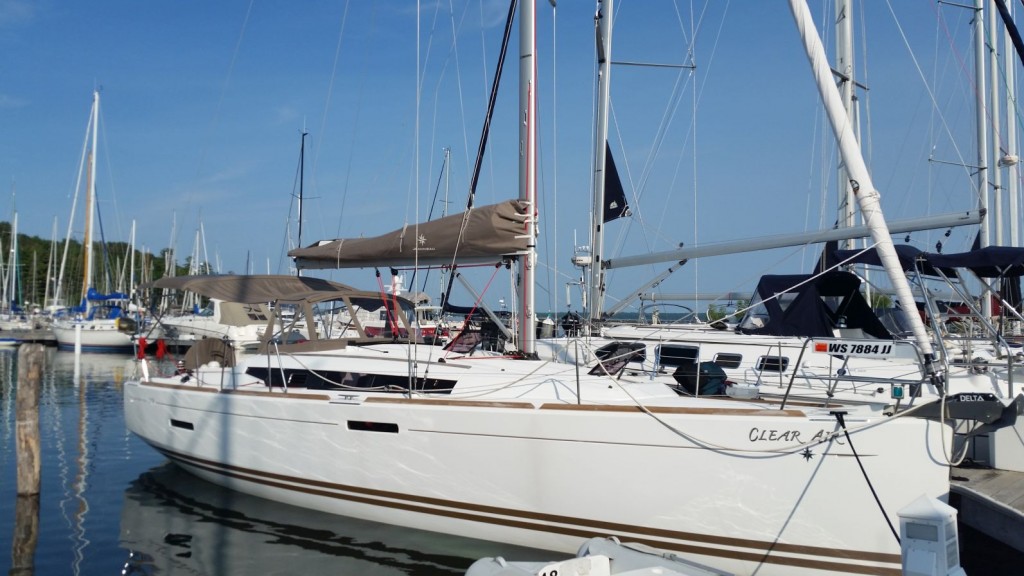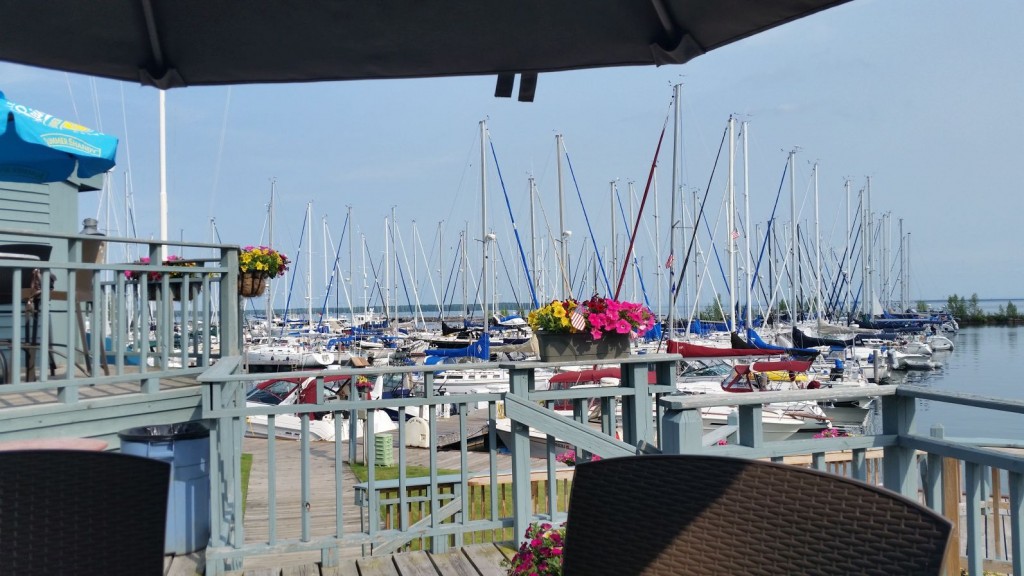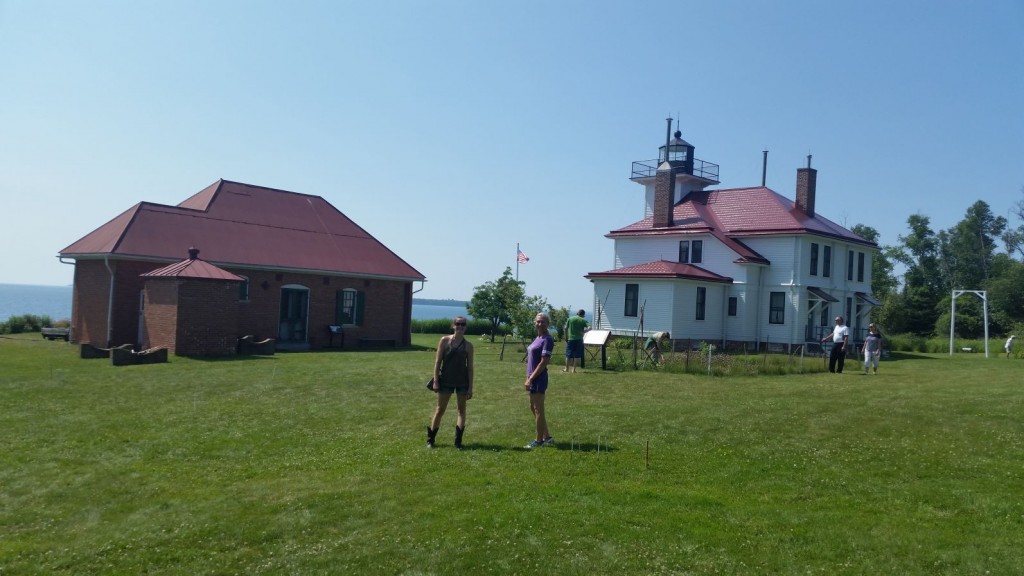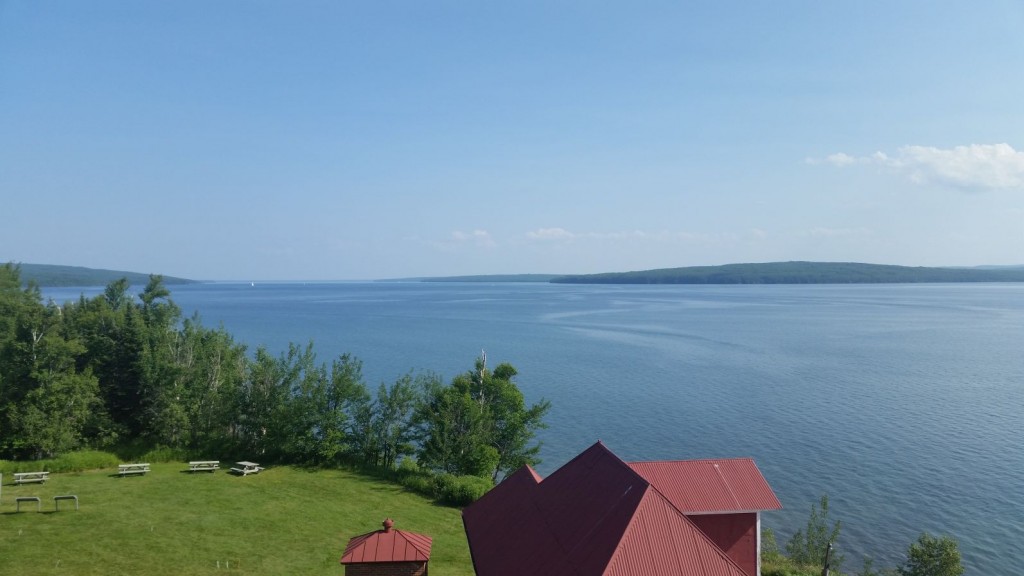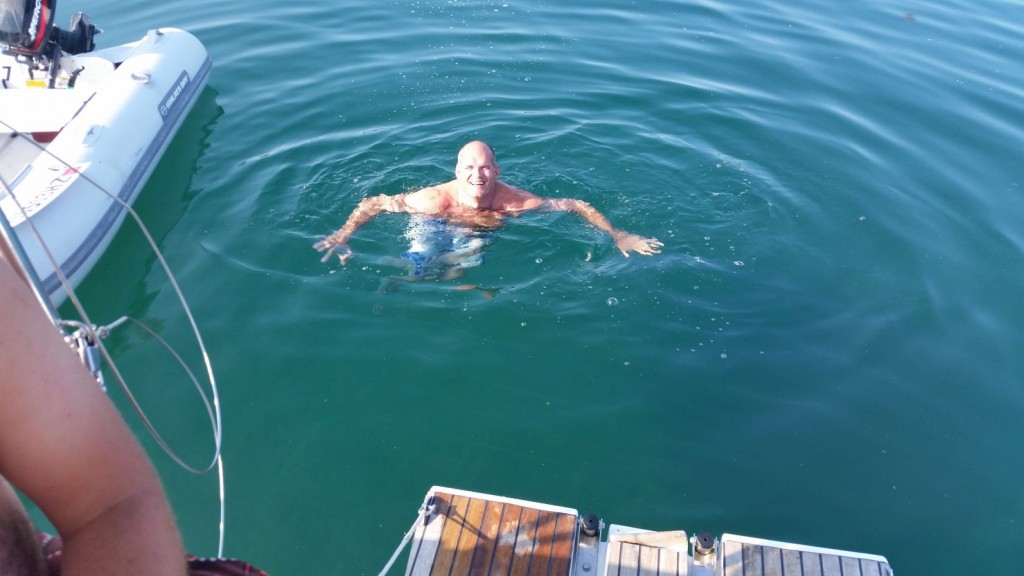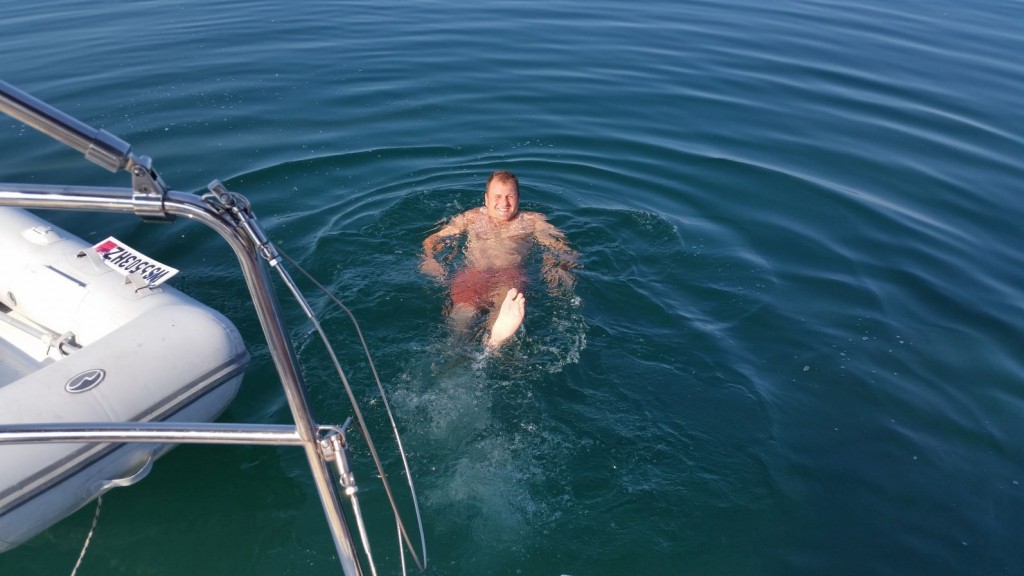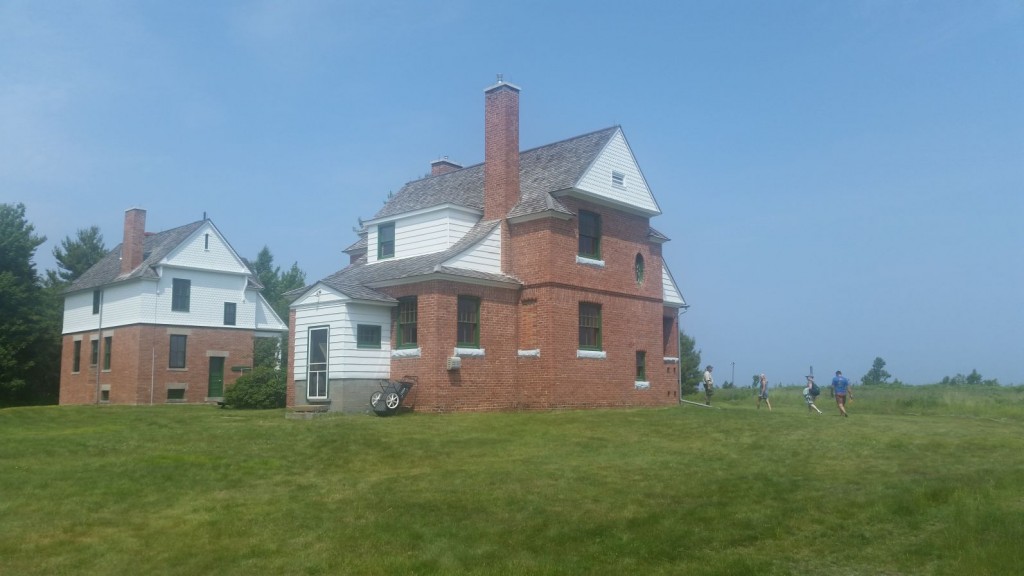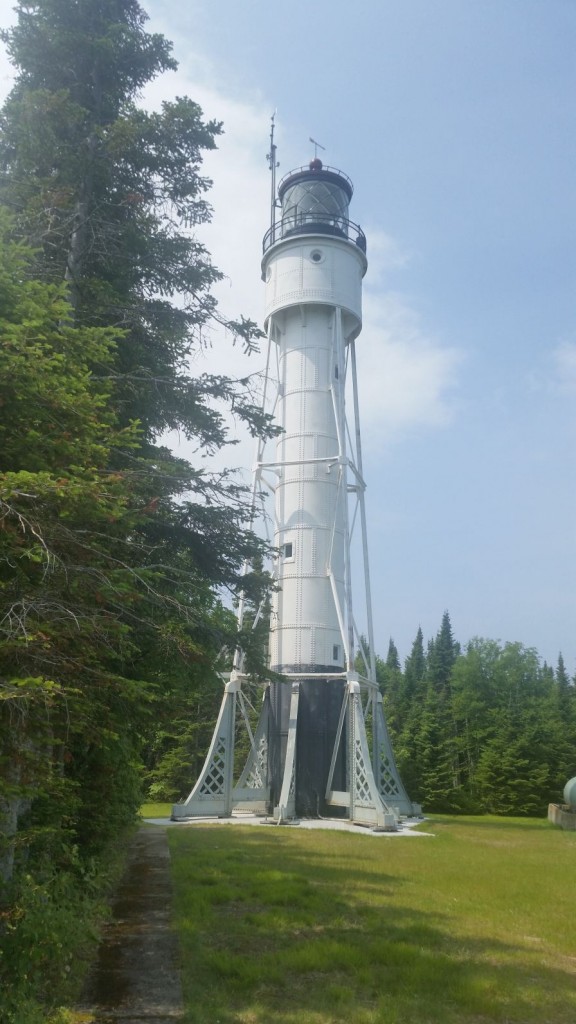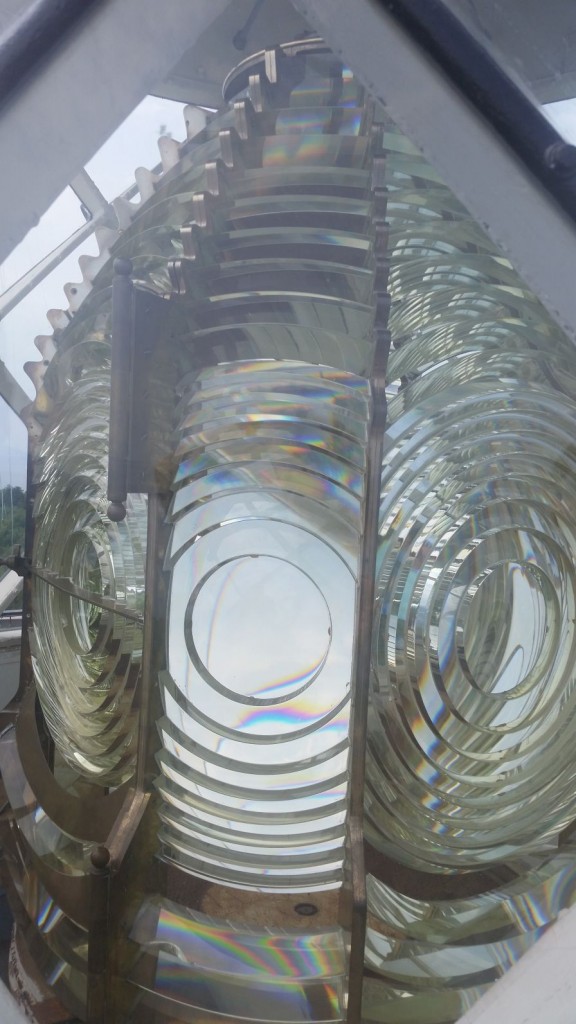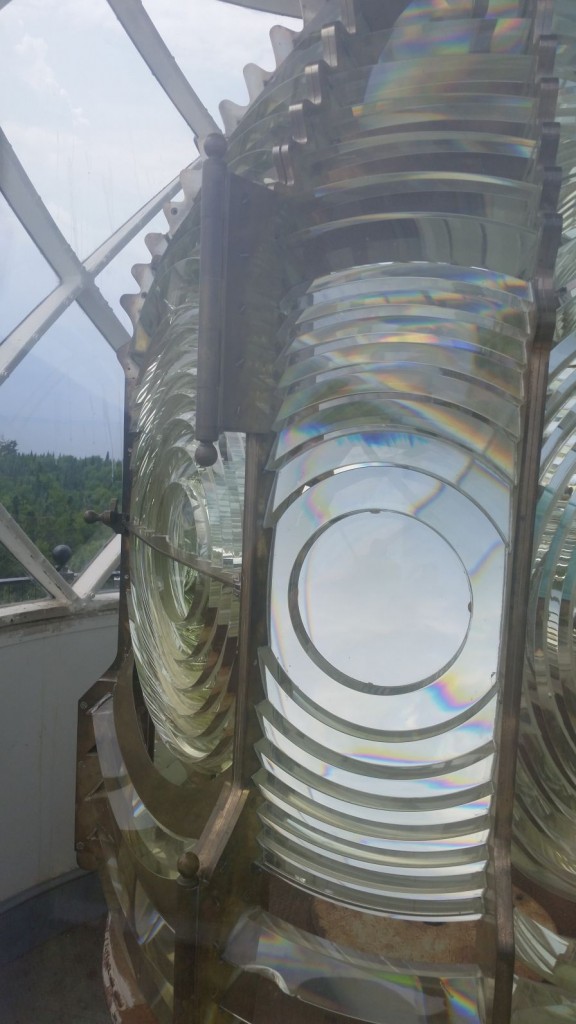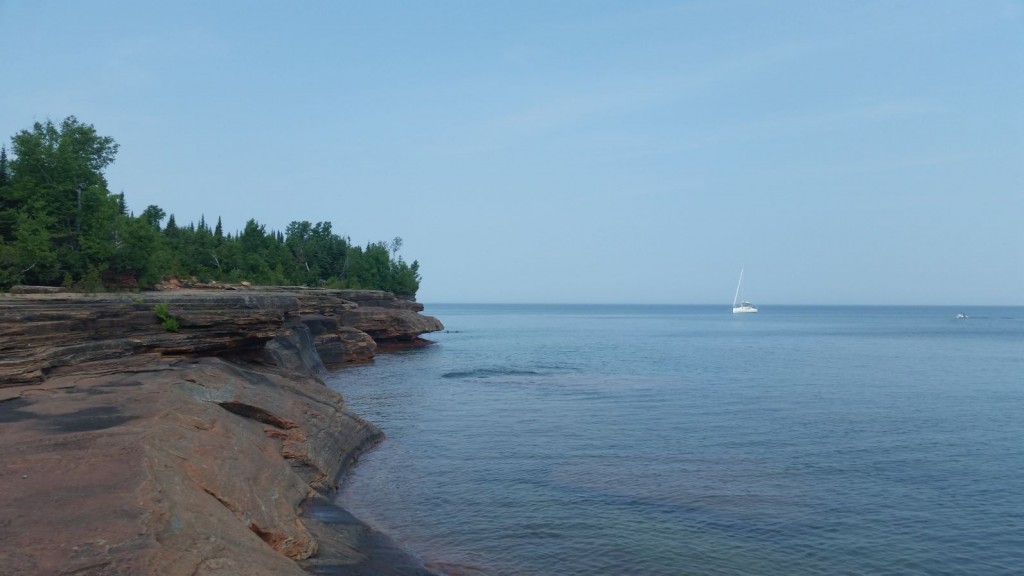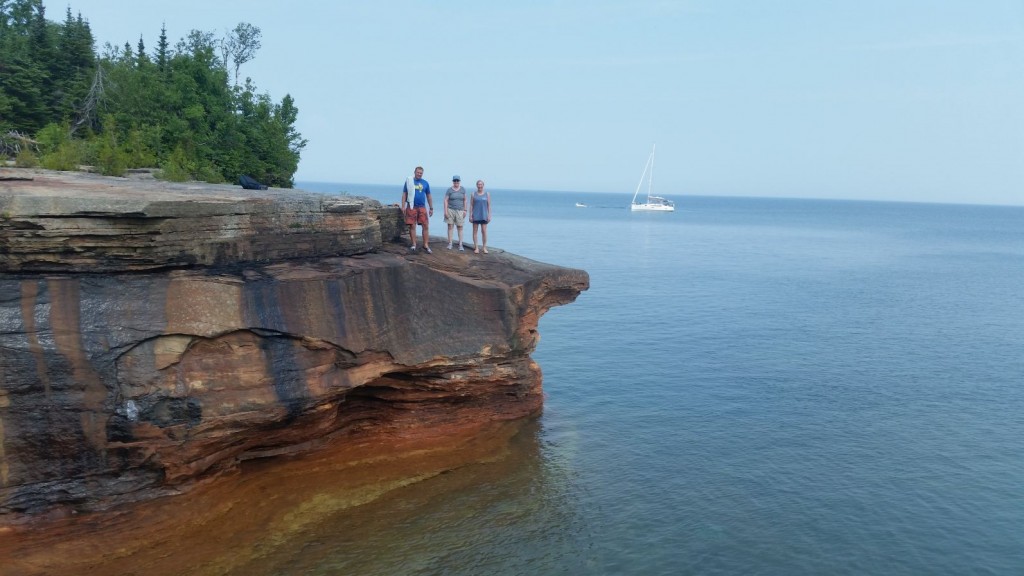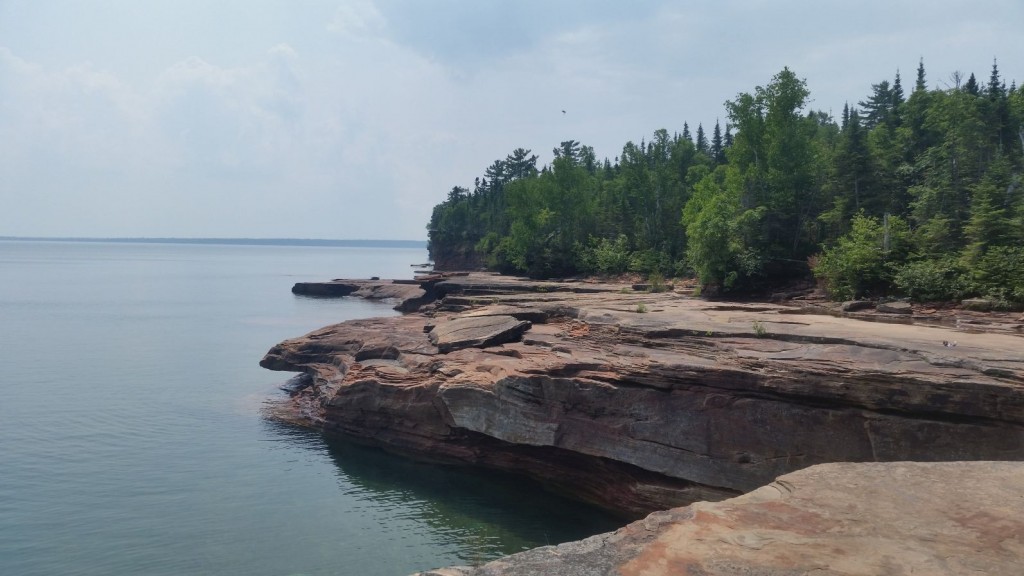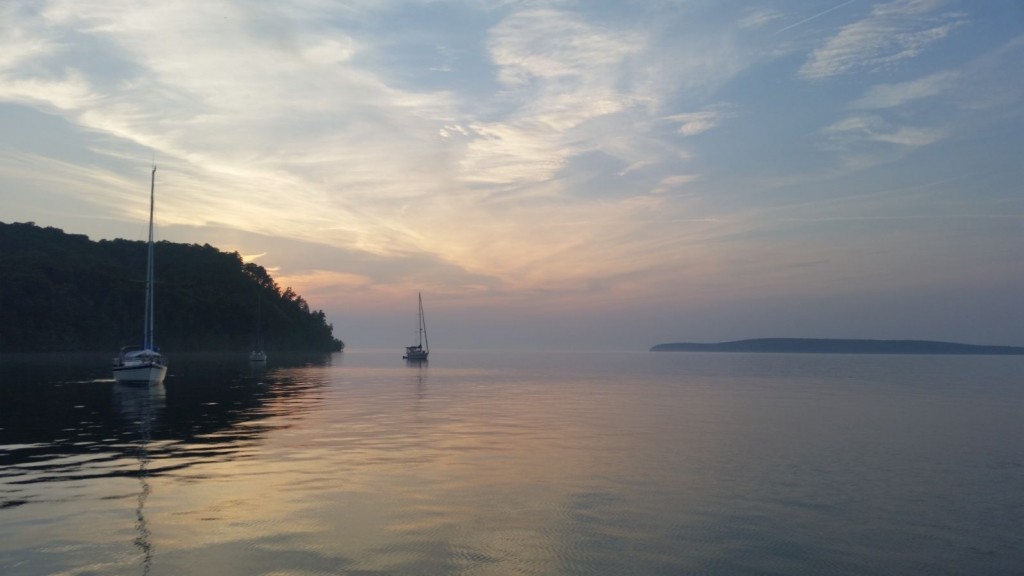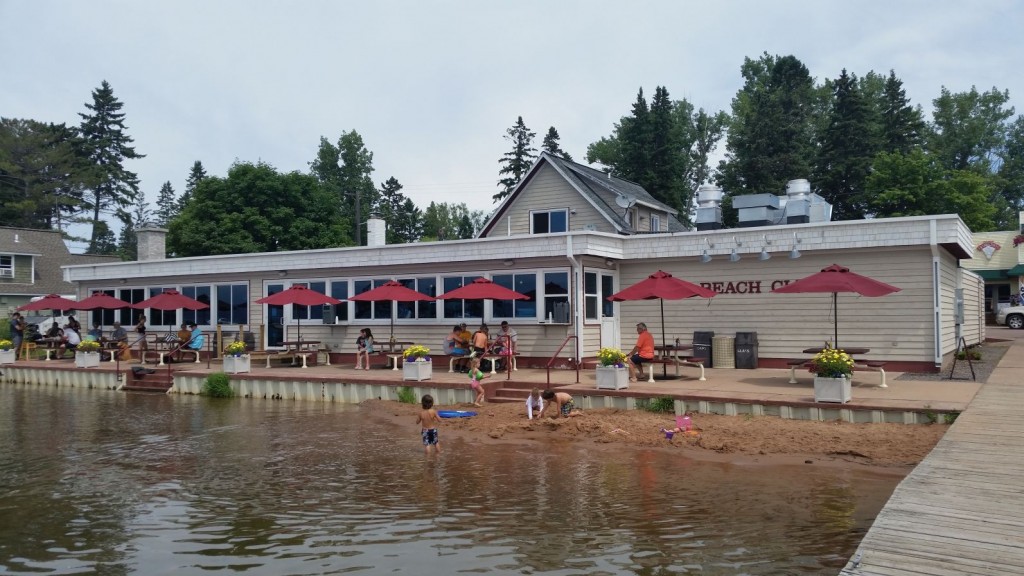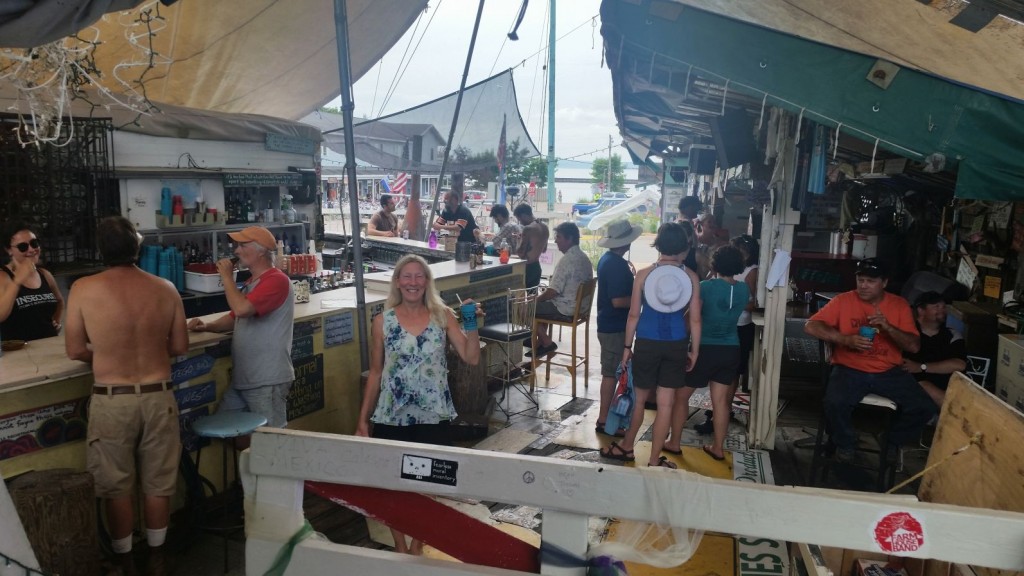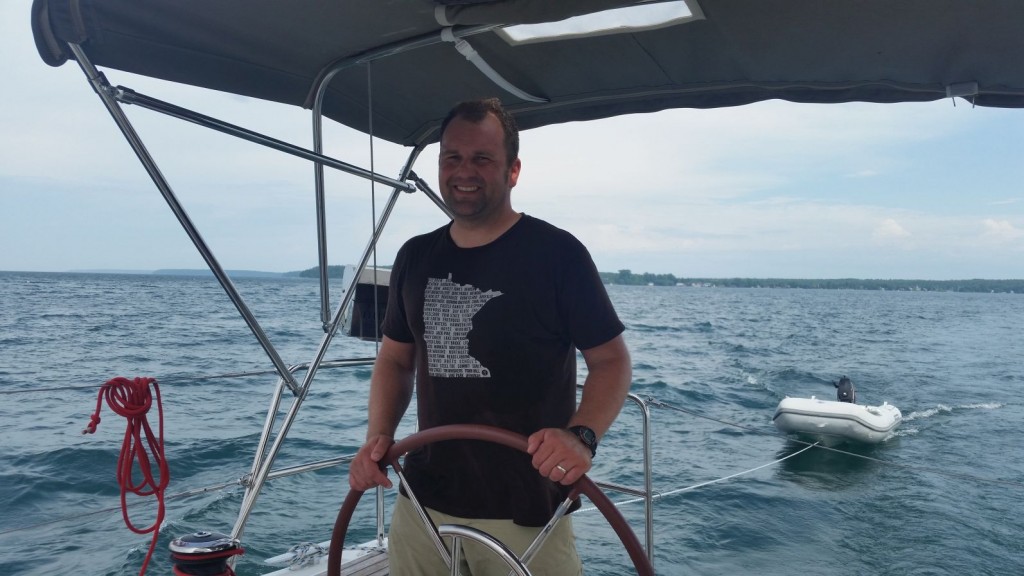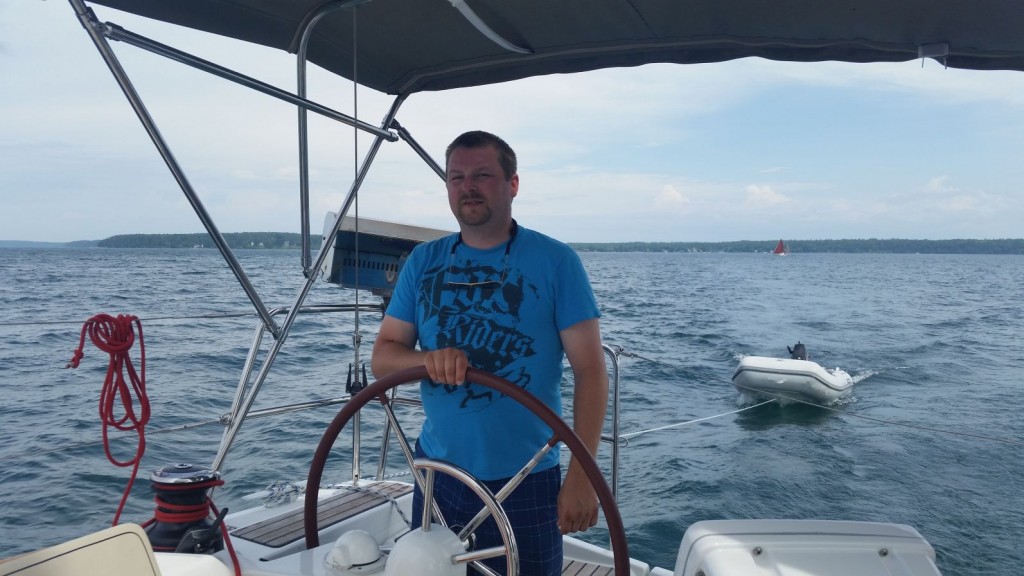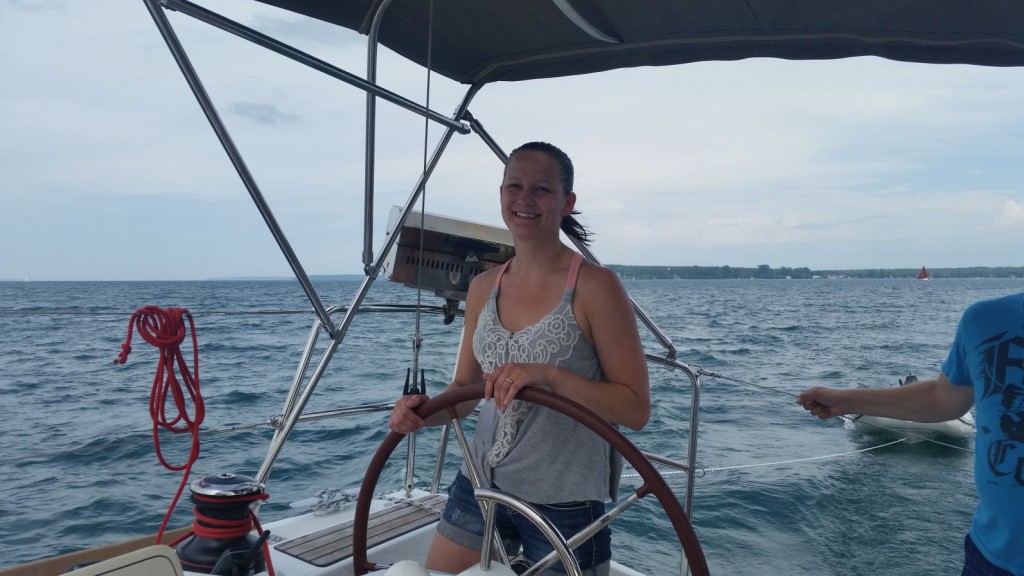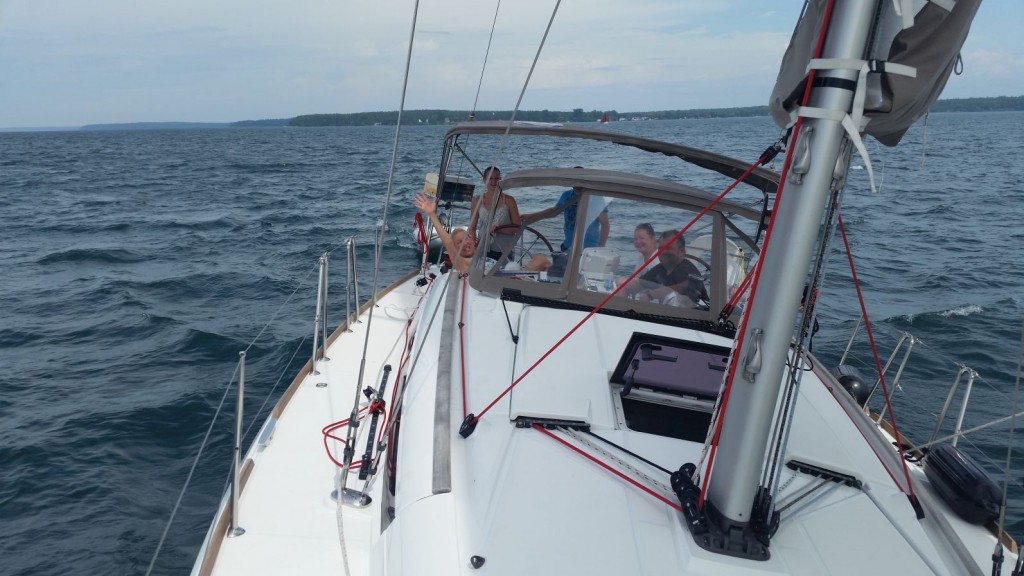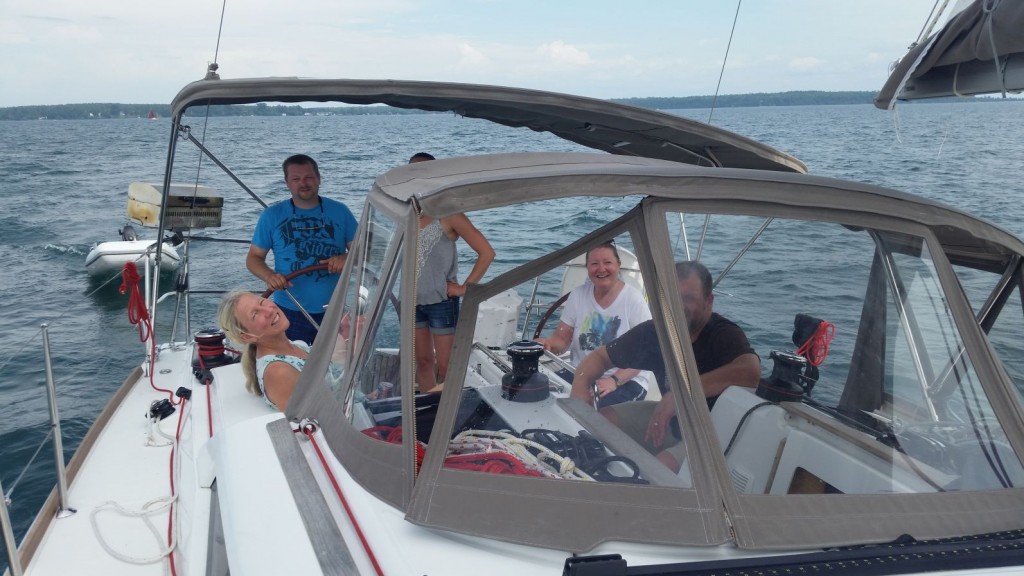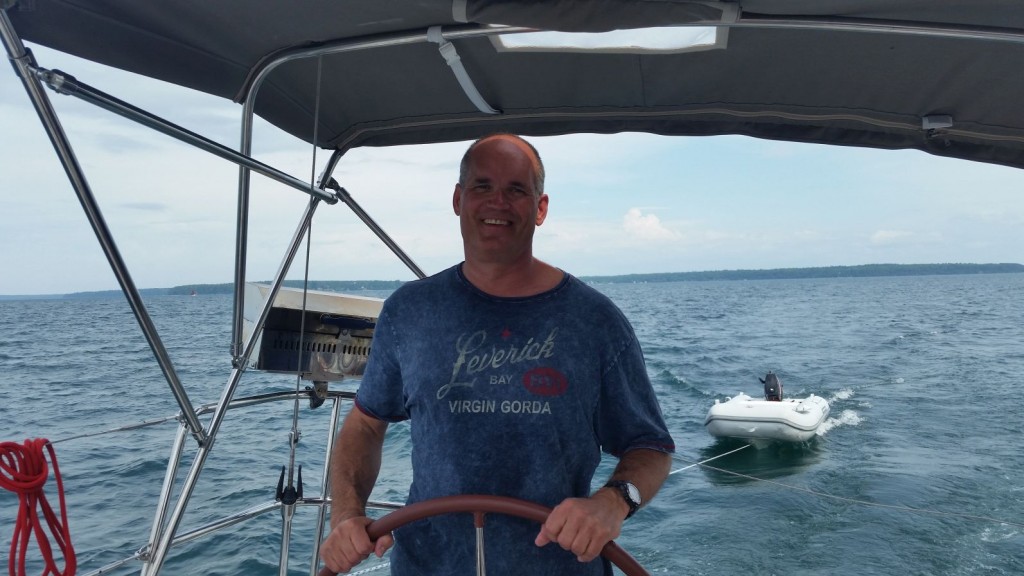After a great week of sailing in the BVI in March, Michael and I were eager to charter (and captain) a boat on Lake Superior this summer. We were able to reserve Clear Air, a Jeanneau Sun Odyssey 379 from Superior Charters. Our crew consisted of my cousin Carol and her son Michael, and our daughter Taryn and her husband James.
We all met up at Port Superior Marina in Bayfield, Wisconsin on a Thursday afternoon. Michael and I arrived a bit early, so we had time for a beverage on the deck. It was a beautiful warm sunny day and the sight of the sailboats from the deck created a peaceful feeling.
After everyone arrived we stored our gear and crammed food and beverage items anywhere and everywhere there was an unused space on the boat. That’s how sailors roll!
We ate dinner at the marina’s Portside Bar and Restaurant . At some point, I remember asking Carol how much time she’d spent on a sailboat. She asked me how long it had taken us to unpack; that’s how much time she’d spent on a sailboat. Taryn and James had spent next to no time on a sailboat either. This was going to be a great adventure!
Friday – Raspberry Island
We decided to go to Raspberry Island to see the lighthouse. When Michael and I visited Raspberry Island the previous summer we were in a boat with a shallower draft so we’d docked right below the lighthouse. This time we couldn’t use the dock so we set anchor on another side of the island and took a path to the lighthouse. It turned out to be a blessing because it was a nice walk. There was foliage everywhere and it felt good to walk after being on the boat. It was a tad hot, though.
The lighthouse tour is very interesting and informative. The guide takes you back in time to when the lighthouse keepers lived on the island. It was a tough life. They were often separated from their families for months at a time. The guide also describes the amazing Fresnel light that used to be in the lighthouse. Note: Even though the Fresnel light was removed from the Raspberry Bay lighthouse in 1957, this is still a functioning lighthouse, critical for marine traffic in the area. The beacon now consists of a light on a pole. Not quite as sexy as a traditional lighthouse but very functional.
When we returned to the boat we took turns jumping into the water to cool off. That took about 30 seconds per person. The water was chilly but refreshing!
Saturday – Devil’s Island
There was no wind on Saturday so we decided to motor to Devils Island. Devils Island has three really awesome things: caves, cliffs and a lighthouse that still has a Fresnel light. It was another hot day. We took the dinghy to the island and hiked a fair distance to the lighthouse.
And now, I have to talk about the Fresnel light. (If you aren’t interested, skip this and the next paragraph.) The Fresnel light was developed for lighthouses by French physicist Augustin-Jean Fresnel. One of the greatest improvements in lighthouse technology came in 1822 when Fresnel introduced a new lens design that revolutionized lighthouse optics and made waterways safer for sailors around the world. Fresnel’s lens resembles a giant beehive with a complex system of multi-faceted glass prisms mounted in a brass framework. The prisms reflect and refract (bend) light and magnify it, thereby taking rays of light that would normally scatter in all directions and focusing them into a single beam. Because of this design, a Fresnel lens is much more efficient than traditional light sources. Tests show that an open flame loses nearly 97% of its light. A light with a reflector placed behind it loses 60-80% of its light. A Fresnel lens, however, loses a maximum of 20% of its light. This concentrated light of Fresnel’s lens vastly improved lighthouse effectiveness. Before its invention, the brightest lighthouse beams could only be seen from 8-12 miles away. The light from a Fresnel lens could shine all the way to the horizon, more than 20 miles away.
Another innovation of the Fresnel lens is its ability to produce individual light patterns called characteristics. Prior to the Fresnel lens, most lighthouses had only solid, steady lights. This made it difficult to distinguish one light from another, often causing confusion and dangerous conditions for passing ships. But the Fresnel lens could produce an almost unlimited combination of patterns, depending on the number of installed flash panels and the speed that the lens revolved. Originally a clockwork type mechanism was used to rotate the lens around the lamp to produce a flash. With individual flash patterns, lighthouses along the same coast are easily differentiated and recognized, thereby better aiding mariners.
The Fresnel light itself is not only a marvel of technology, it is a work of art. Our pictures don’t do it justice. If you have an opportunity to visit Devils Island, we highly recommend that you visit the lighthouse.
We hiked back to the dinghy, at which time Michael (Carol’s son) and I (Cindy) decided to jump off the cliff while Taryn and James took the dinghy to explore the caves. By the time we were all back on the boat, Carol and Michael were ready to take the dinghy to explore the caves.
This would be a good time to talk about the flies. Fly hatching = seven days of hell. We arrived when the flies had recently hatched. We had ever experienced anything like this. The flies were everywhere! We lived with flyswatters in our hands. Dead fly carcasses littered the boat. No amount of bug spray kept them at bay. They were flies on steroids!!
But I digress . . . when Carol and Mike decided to take the dinghy to see the caves they attempted to thwart the flies by wearing long-sleeved jackets, long legged pants, socks and shoes. Those darn flies still managed to bite their ankles. Taryn had a eucalyptus spray that seemed to fend off the flies better than the bug spray, but even Taryn’s spray didn’t cut it.
I’m just saying: we were lucky to make it out alive.
It is important to note that the flies in no way ruined the trip. The company and the scenery were top notch. The nights were peaceful.
Food and Ice
This is also a good time to talk about food and ice. We had plenty of the former and not enough of the latter. As I recall, we ran out of ice on Saturday, the second day of our trip. Our beverages (other than coffee) after that point were room temperature. Given that “room temperature” was about 80 degrees, drinks were pretty warm. Picture yourself on a hot day craving a cold one. You are sweating, hot and thirsty. You want something cold to drink. You grab a soda or a beer and . . . it is the temperature of warm bathwater. Ugh.
But, the upside to this tale is that we ate well. Not only did we prepare good food in the galley, Mike (Carol’s son, not my hubby) was an excellent griller!! He grilled meats, fruits and vegetables to perfection. My goal is to sail with Mike as much as possible from this point forward.
Sunday – Madeline Island
Here are some random pictures from our trip.

